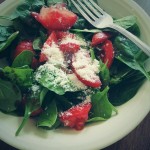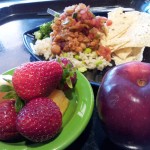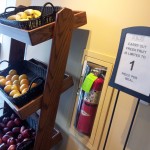As college students, making nutritious choices for your meals can be difficult but not impossible. Students are often pressed for time and have a limited income, but that doesn’t mean your health should suffer. We’ve compiled some tips for making healthier meal choices – no matter where you live.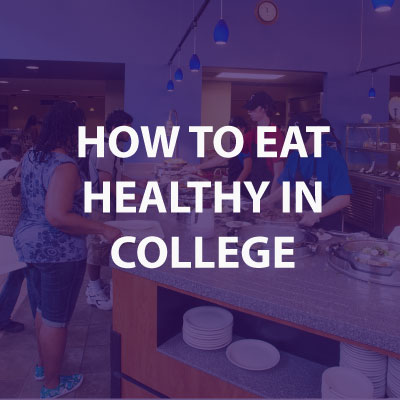
For students with meal plans, the dining halls at Penn State offer a variety of meal options. If you’re overwhelmed by the options, a little bit of meal planning can go a long way. To plan your meals, check out the menus that are listed online every day. There, you’ll see the nutrition information for each meal as well as any ingredients, in case you have any food allergies. By pre-selecting your food based on this information, you’ll be less likely to make impulsive or uninformed decisions in the dining hall.
In a hurry? Scan the menus or meal options in the halls for the RHEAL carrot symbol. Recently added, the RHEAL carrot is a quick and easy way to see which options are healthier for main 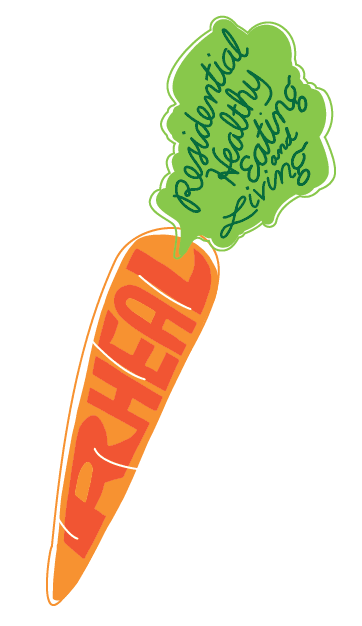 dishes, sides, and soups. Try to stick to these options.
dishes, sides, and soups. Try to stick to these options.
Living off campus is often the first time students become responsible for their own cooking and meal preparation. Try these tips to nourish your body and make it stronger:
- Add fruits and vegetables to meals and snacks. Buy them in season to save money.
- Choose baked or grilled chicken or fish when eating out and pair it with veggies or a salad.
- Stock up on healthy snacks like raw veggies, dried fruit, yogurt, nuts, or instant oatmeal, to have between classes or for late night study sessions to help you avoid ordering out.
- Choose super salads at restaurants that are full of color and packed with nutrients. Don’t forget to ask for the salad dressing on the side so you can control the amount you use.
- Go for the smaller burgers at fast-food chains versus the 1/3 pound burgers. Top them with condiments like ketchup, mustard, lettuce, and tomato instead of mayo, cheese, and bacon.
- Aim for eating whole grain bread, pasta, bagels, and crackers when available to increase fiber intake and provide energy longer.
- Pair calcium rich foods like Greek yogurt or string cheese with your snack and get a boost of protein from it, too.
What other tips do you have for eating healthy in college? Leave them below in our comments section!






